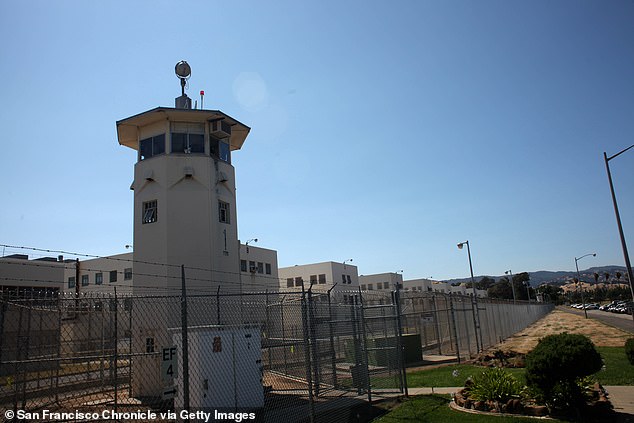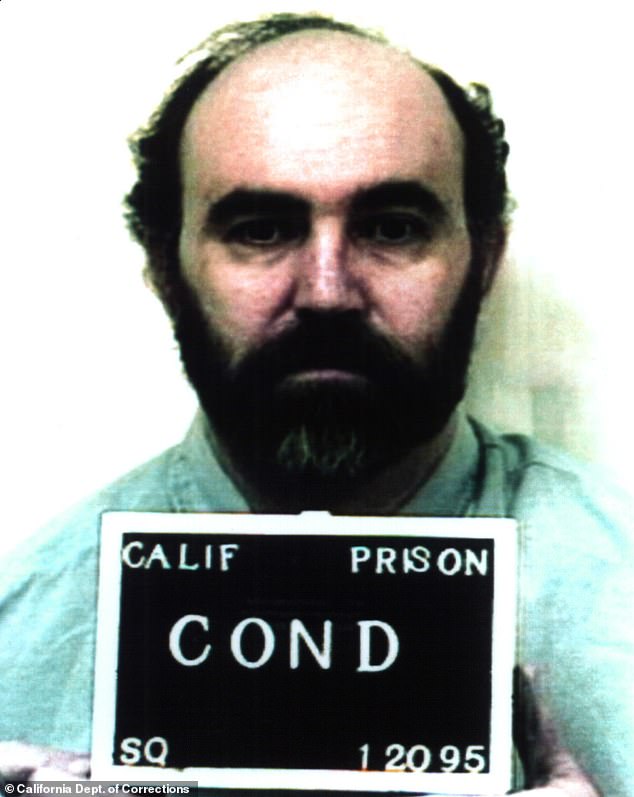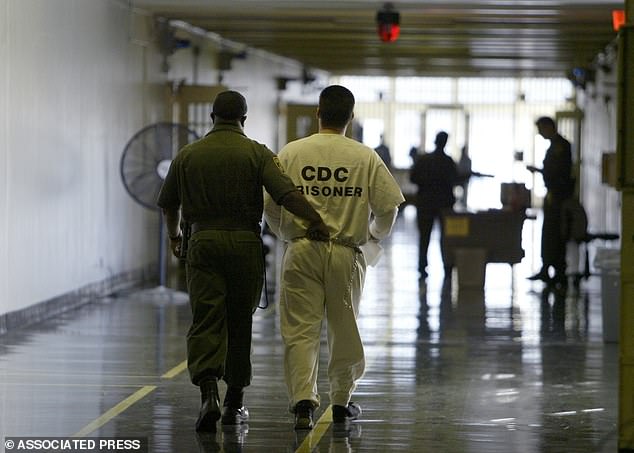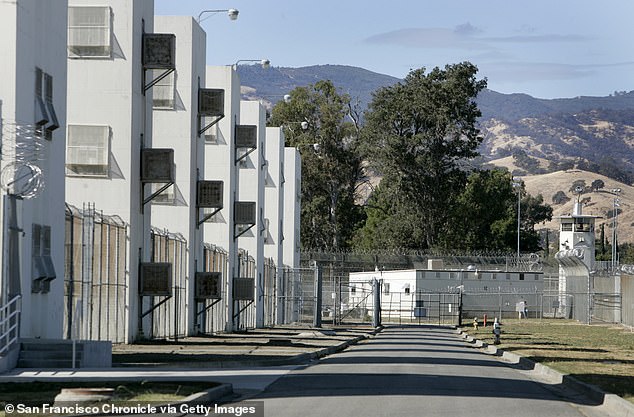REVEALED: California’s most litigious person with more than 2,500 lawsuits to his name – and he lives on Death Row
Steven Wayne Bonilla, who has spent the past 29 years on California’s death row, has become one of the most active litigants in the United States.
Even at 77, Bonilla shows no signs of slowing down in his relentless legal pursuits, filing lawsuit after lawsuit.
His primary goal remains to overturn his conviction for orchestrating the 1987 murder of Jerry Lee Harris, his former nightclub business partner in Cupertino, California.
Bonilla has initiated numerous lawsuits, petitions and other legal actions against district attorneys, judges, clerks, the State of California and all of its counties.
But despite his efforts, all his cases have been dismissed, prompting further lawsuits.
Steven Wayne Bonilla, 77, has been on death row in California for 29 years and four months since his 1995 conviction for a 1987 murder
A search of a federal legal database turns up more than 2,500 cases with Bonilla as a plaintiff, while searches of the provincial courts reveal hundreds more.
Now that he has time on his hands, Bonilla has been known to file petitions in 74 different courts in a single day from his cell at the California Medical Facility in Vacaville.
“I don’t have an exact count of the number of lawsuits I’ve filed,” he said during an interview with the newspaper San Francisco Chronicle.
Even though he doesn’t know the exact number, he continues to report crimes.
“I have consistently filed two or more petitions a week,” he said. ‘I hate all the denials I get. They are very depressing. But when I file a motion citing the law, I know I’m right.
“I tell them repeatedly, even though I was a difficult litigant, I still have the right to have my petition filed.”

Now that he has time on his hands, Bonilla has been known to file petitions in 74 different courts in a single day from his cell at the California Medical Facility in Vacaville.
Bonilla’s files are so prolific that court officials have trouble keeping up.
Federal judges will now occasionally throw out his cases en masse, eliminating dozens at a time.
Bonilla’s continued legal actions highlight a long-standing problem for courts: dealing with “vexatious” or “serious” litigants who file numerous lawsuits, often seen as an abuse of the legal system.
While courts may impose restrictions on such litigants to prevent frivolous cases, they must also ensure that legitimate claims are not overlooked.
However, Bonilla is not alone: Jonathan Lee Riches is the name of another infamous serial lawyer who has reportedly filed more than 4,000 lawsuits.
His suits targeted everything from individuals and entities, from celebrities to historical figures.
Bonilla’s lawsuits, on the other hand, focus solely on overturning his conviction.

Prosecutors alleged that Bonilla, seeking to recover more than $1 million from his business partner, hired two men to kill Jerry Lee Harris in 1987.
Bonilla’ was sentenced to death after a financial dispute with Harris.
Prosecutors alleged that Bonilla, seeking to recover more than $1 million, hired two men to kill Harris.
According to testimony, Harris was lured to a meeting, attacked and suffocated with duct tape before being buried in the Nevada desert.
After a jury deadlocked on his sentence, a second jury sentenced Bonilla to death.
During his legal battle, Bonilla has denied responsibility for Harris’ death.
His former attorney, David Nickerson, described Bonilla as intense and well-educated, with a credible claim for a new trial.
Nickerson noted that Bonilla’s numerous lawsuits, including those against his own attorney, are part of his ongoing efforts to seek justice.

A prison guard escorts an inmate down a hallway at the California Medical Facility in Vacaville, California (file photo)
In 2013, Bonilla was placed on a “vexatious litigant” list by the Marin County Superior Court, requiring him to obtain judicial approval for new lawsuits.
Despite this, he continues to file motions and claims, especially in Alameda County regarding his criminal case.
The Judicial Council of California tracks troublesome litigants and identifies those who repeatedly file unfair lawsuits.
Court officials in Alameda County and elsewhere have implemented systems to flag and manage these cases, though they still thoroughly review each submission.
Bonilla’s legal battle is supported by the prison system, which provides him with the necessary resources to pursue his numerous lawsuits.
He estimates that the costs of his litigation efforts would be significant if they were not covered by the prison.

A look inside the walls of the California Medical Facility in Vacaville, California, a state prison where many of the state’s sickest inmates are sent for medical treatment
Courts are often particularly harsh on people who continue to file one habeas corpus petition after another for unlawful detention – and they certainly don’t like receiving the same document against which they are filed over and over again.
“From the defendant’s side — especially in these habeas petitions — the evidence can seem very compelling,” says Jonathan Abel, an associate professor at UC Law San Francisco.
“But from the court’s perspective it’s, ‘You had your chance, we don’t really believe you, enough is enough.’
In response to a journalist’s inquiry, Bonilla provided detailed letters and copies of legal documents, emphasizing his right to challenge what he considers unlawful prosecution.
Bonilla told it SFChronicle.com that he believes his petitions are all based on valid legal grounds, despite being repeatedly rejected.
Bonilla’s relentless litigation efforts have served to highlight the complexities courts face in balancing the prevention of abuse of the legal system and the investigation of potentially valid claims.
